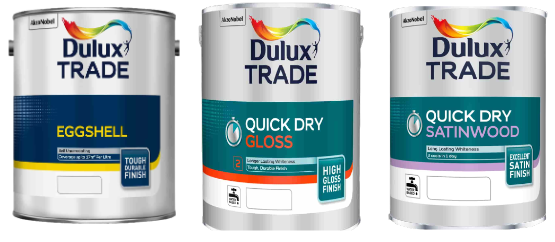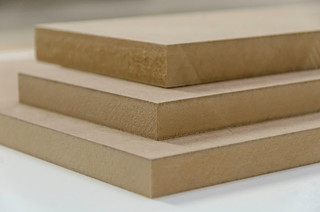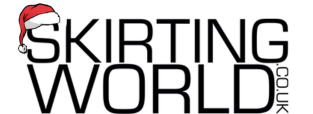
The Best Paint For MDF | Top Primers, Acrylics & Enamels | 2025
Posted by Sultan Khan on 28th Aug 2025
Painting MDF is easy if you understand the material. Cut edges are both your biggest challenge and your key to professional results. Get the edge sealing right, choose proven products, and follow the proper sequence for a finish that rivals factory work.
Quick answer: Prime edges first, then prime faces, with Zinsser B-I-N (shellac) or B-I-N Aqua; or use Zinsser Cover Stain on all surfaces. Overcoat with Dulux Trade Quick Dry Satinwood for a tough, non-yellowing finish. Avoid improvised edge sealers and use proper primers instead.
Why MDF needs different paint
MDF isn't just "cheap wood" - it's a completely different composite material that behaves differently with paint.
The material consists of wood fibres broken down completely and reformed with synthetic resins. This creates smooth factory-sanded faces but exposes highly porous fibre networks when you cut it. Cut edges are significantly more absorbent than the faces, and water-based products can make unsealed edges swell.
MDF Cut Edges
Think of cut MDF edges as exposed fibre ends that readily absorb moisture. When paint hits these edges, it gets drawn deep into the substrate, potentially causing swelling with water-based products.
This is why proper edge sealing is critical - and why oil-based, shellac, or purpose-made MDF primers work better than improvised solutions. Use the right primer for the job, and you'll get excellent results.

Our best paint recommendations for MDF
These paint and primer combinations consistently deliver the best results without causing swelling:
Zinsser Cover Stain + Dulux Trade Quick Dry Satinwood
Why this combination works:
- Fast-drying oil primer greatly reduces the risk of MDF swelling
- Excellent edge sealing without additional steps
- Superior adhesion and stain blocking
- Compatible with water-based topcoats once cured
Cost: Approximately £40 for materials to cover 20m² (primer + topcoat)
Available: Most trade suppliers
Real user feedback:
"Oil-based primer is the secret for MDF. No swelling, perfect adhesion, and you can use water-based topcoats over it. My kitchen cabinets still look perfect after three years."
Pro tip: If you want to follow the full Dulux system or are making a strong colour change, apply Dulux Trade Quick Dry Undercoat before the Satinwood.
Fastest Drying Option: Zinsser B-I-N + Dulux Trade Satinwood
B-I-N shellac primer seals MDF edges exceptionally well and dries incredibly fast. Touch dry in 15 minutes, recoat ready in 45 minutes. Excellent stain-blocking properties (for interior work, B-I-N is for spot-priming on exteriors; use systems designed for full exterior exposure).
Cost: Around £55 for 20m² coverage
Note: Strong alcohol smell during application, ensure good ventilation and observe manufacturer safety guidance
Low-Odour Water-Based Alternative: Zinsser B-I-N Aqua + Dulux Trade Satinwood
B-I-N Aqua is a multi-surface water-based primer that is explicitly suitable for MDF. Touch dry in 25 minutes, recoat ready in 45 minutes. Can adhere to MDF without sanding, though a light scuff on factory faces is still good practice for the smoothest finish.
Cost: Around £50 for 20m² coverage
Best for: Indoor use where odour is a concern
Budget Choice: Edge Primer + Leyland Trade Undercoat + Crown Trade Satin
Use a primer on edges first (Cover Stain or B-I-N), then traditional oil-based undercoat to build film before your satin topcoat. Undercoat recoats after 16-24 hours but provides reliable results for less demanding applications.
Cost: Prices vary by size and brand
Best for: Shelving, workshop projects
Step-by-step guide to painting MDF
The key to professional results lies in following the right sequence. Rush any step, and you'll see it in the final finish.
Surface preparation
Clean sealed MDF with a damp cloth to remove dust or residue. For raw MDF, vacuum off dust and use a tack cloth rather than wiping with moisture. The factory-sanded faces usually don't need additional sanding, but lightly sand any rough spots with 240-grit paper.
Time needed: 15-30 minutes depending on project size
Primer application
Apply your chosen primer in thin, even coats. Don't try to cover everything in one go - it's better to do two thin coats than one thick one. Pay extra attention to edges, applying primer until they stop absorbing it. These primers are compatible with most water- and oil-based topcoats.
Drying times: Cover Stain: touch dry about 35 min, recoat about 2 hours; B-I-N/B-I-N Aqua: touch dry ~15-25 min, recoat ~45 min; Traditional undercoats: recoat 16-24 hours
Light sanding
Once the primer is dry and recoat-ready, lightly sand with 320-400 grit paper. This removes any raised fibres and gives the topcoat something to grip. Wipe clean with a tack cloth.
Don't skip this: Even small imperfections in the primer will show through your topcoat
Topcoat application
Apply your topcoat in thin, even layers. For the smoothest finish, use a foam mini-roller followed by light brush strokes to eliminate texture. Two coats usually give the best durability.
Thinning note: Only thin if the tin or technical data sheet allows, and then within the stated range. Check manufacturer guidance for specific limits.
"For best results: oil primer, denib, optional water-based primer undercoat, denib, then 2-3 thin rolled topcoats. The oil base stops all swelling issues."
— Professional decorator sharing their process
Common MDF painting problems
Even experienced DIYers run into issues with MDF. Here are the most common problems and how to fix them:
Edge swelling after painting
Cause: Water-based primer or paint applied to unsealed edges.
Solution: Sand back the swollen areas, seal with oil-based primer, shellac, or purpose-made MDF primer, then repaint. Prevention is better - use proper primers from the start.
Patchy, uneven coverage on edges
Cause: Insufficient edge sealing or trying to cover unsealed edges in too few coats.
Solution: Apply additional primer coats to edges until they stop absorbing paint. Quality primers like Cover Stain and B-I-N typically need fewer coats than standard water-based options.
Orange peel texture
Cause: Paint drying too quickly, wrong roller type, or applying too thick.
Solution: Use a higher quality paint with better flow properties, switch to a foam roller, and thin your paint slightly if needed. Keep room temperature moderate.
Brush marks won't disappear
Cause: Paint too thick, wrong brush type, or poor technique.
Solution: Use thin coats, invest in quality synthetic brushes for water-based paints, and learn proper "laying off" technique. Consider using a foam roller instead.
Remember: Most MDF painting problems stem from moisture causing swelling. Use oil-based, shellac, or purpose-made MDF primers to greatly reduce this risk.
Best paints by project type
Different MDF projects have different demands. Here's what works best for each:
Budget vs premium options
Premium paint systems can cost 3-4 times more than budget options. Here's when the extra spend is worth it:
| System | Typical UK Cost (20m²) | Best for | Expected Performance |
|---|---|---|---|
| Budget: Edge primer + undercoat + Crown Satin | £30 | Shelving, workshop projects, rental properties | Good for light use |
| Mid-range: Cover Stain + Dulux Trade | £40 | Furniture, doors, good-quality projects | Excellent moderate use |
| Premium: B-I-N + Benjamin Moore | £65 | Kitchen cabinets, high-end furniture, commercial | Professional heavy use |
"I've tried saving money with water-based primers on MDF. The swelling and extra coats needed mean oil-based actually works out cheaper in the long run."
— DIY forum user on false economy
When to spend more
- High-use areas like kitchen cabinets and doors
- Projects where you can't easily repaint (built-in furniture)
- When the labour cost far exceeds material cost
- Anywhere failure would be expensive or disruptive to fix
When budget options work fine
- Workshop storage and utility areas
- Children's furniture that will be outgrown
- Practice projects while you learn technique
- Anywhere you might change the colour scheme within 5 years
Note: Standard MDF (even MR MDF) is for interior use only. For exterior applications, use exterior-grade MDF or Tricoya. Ensure good ventilation when using shellac and solvent primers due to strong fumes and observe manufacturer safety guidance.
Getting professional results with MDF
MDF can deliver outstanding painted finishes - often better than solid wood - but only when you respect its unique properties. The secret? Greatly reducing moisture absorption with proper primers and sealers.
Use oil-based, shellac, or purpose-made MDF primers to greatly reduce swelling risks, seal edges properly, sand between coats, and finish with quality topcoats. While water-based systems can work with careful preparation, oil-based and shellac primers provide more predictable results.
The products and techniques covered here work consistently for UK DIYers. Whether you choose budget or premium systems, the fundamentals remain the same: help prevent moisture absorption, build up thin coats systematically, and patience with the drying process delivers professional results every time.
